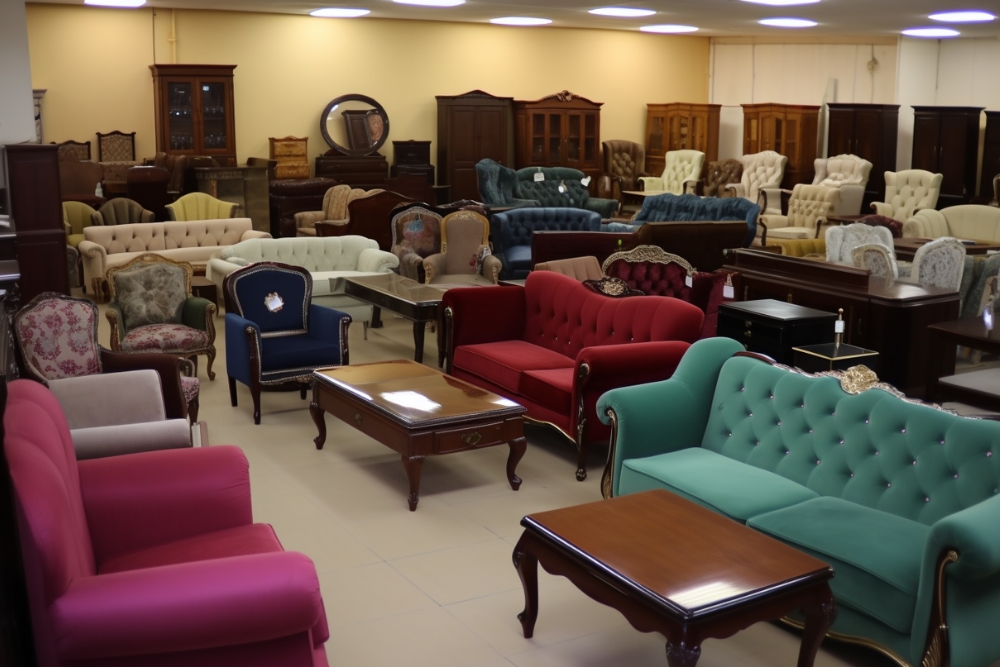Mastering the Art of Secondhand Furniture Shopping
Uncover the secrets of finding hidden gems in the world of used furniture. This comprehensive guide explores trusted sources, expert evaluation techniques, and savvy negotiation strategies. Discover how to identify valuable vintage pieces and navigate online platforms for the best deals. Whether you're a budget-conscious decorator or a vintage enthusiast, elevate your furniture hunting skills today.

Uncovering Treasure Troves: Where to Source Quality Secondhand Furniture
The hunt for pre-loved furniture can be an exhilarating experience, offering both economic and aesthetic rewards. To kickstart your search, consider exploring these reliable avenues:
-
Digital Marketplaces: Platforms like Facebook Marketplace, Kijiji, and Craigslist serve as virtual bazaars, showcasing an eclectic array of local offerings.
-
Brick-and-Mortar Gems: Traditional thrift stores, consignment shops, and antique emporiums provide tactile browsing experiences, allowing you to inspect items firsthand.
-
Specialty Outlets: Many urban centers boast curated secondhand furniture stores, offering a refined selection of pre-owned pieces.
-
Event-Based Opportunities: Keep an eye out for estate sales and auctions, which often yield unique vintage finds.
The Art of Assessment: Gauging Used Furniture Quality
Mastering the skill of furniture evaluation is crucial for making informed purchases. Consider these key steps:
-
Visual Inspection: Scrutinize items for obvious flaws like scratches, dents, or discoloration.
-
Structural Integrity Test: Gently manipulate the furniture to check for stability and sturdiness.
-
Upholstery Examination: For fabric-covered items, look for signs of wear, odors, or potential pest issues.
-
Hidden Damage Detection: Investigate less visible areas, such as drawer interiors or cushion undersides, for concealed problems.
-
Historical Context: Inquire about the piece’s background, including any past repairs or restorations.
When shopping online, request high-resolution images from multiple angles to conduct a thorough virtual assessment.
Decoding Pricing: Factors Influencing Secondhand Furniture Value
Understanding the elements that impact used furniture pricing can help you identify fair deals:
-
Brand Prestige: Renowned designer pieces often command premium prices.
-
Age and Scarcity: Vintage items, particularly from coveted eras, may carry higher price tags.
-
Condition: Well-preserved furniture typically fetches more than worn pieces.
-
Material Quality: Solid wood constructions generally outvalue particleboard alternatives.
-
Design Trends: Current interior design preferences can inflate demand for certain styles.
-
Geographical Considerations: Urban markets may see elevated prices due to higher living costs and increased competition.
Unveiling Hidden Treasures: Identifying Valuable Vintage Pieces
Developing an eye for valuable vintage furniture requires a combination of knowledge and intuition:
-
Maker’s Marks: Examine items for manufacturer labels or stamps, often found on undersides or in drawers.
-
Craftsmanship Clues: Look for indicators of quality construction, such as dovetail joints in drawers.
-
Material Analysis: Recognize high-value materials like solid hardwoods or premium veneers.
-
Style Familiarity: Educate yourself on signature design elements from different historical periods.
-
Expert Consultation: For potentially rare finds, consider seeking advice from antique specialists or utilizing price guides.
Negotiation Nuances: Strategies for Securing the Best Deals
Hone your bargaining skills to maximize value when purchasing used furniture:
-
Market Research: Arm yourself with knowledge of fair prices for similar items.
-
Flaw Highlighting: Tactfully point out imperfections to justify lower offers.
-
Bundle Bargaining: Propose package deals when interested in multiple pieces.
-
Strategic Timing: Capitalize on end-of-sale or moving situations when sellers may be more flexible.
-
DIY Delivery: Offer to handle transportation yourself as a negotiation tool.
-
Cash Transactions: Leverage the appeal of immediate payment to potentially secure better prices.
-
Respectful Approach: Maintain politeness throughout negotiations to foster goodwill and potential future deals.
Digital Destinations: Top Online Platforms for Used Furniture
Navigate the digital landscape of secondhand furniture with this comparison of leading platforms:
| Platform | Unique Selling Points | Notable Features |
|---|---|---|
| Facebook Marketplace | Hyperlocal focus, seamless communication | In-app messaging, user ratings system |
| Kijiji | Extensive selection, Canada-centric | Refined category filters, customizable alerts |
| eBay | Global inventory, auction-style listings | Buyer protection policies, detailed item histories |
| Etsy | Curated vintage and artisanal offerings | Direct creator communication, customization options |
| 1stDibs | Luxury and designer piece specialization | Curated collections, authenticity guarantees |
Remember that market conditions and pricing can fluctuate. Always conduct thorough research before making significant purchases.
Embarking on a used furniture quest can be a rewarding endeavor, offering the potential to discover unique pieces that tell stories and add character to your living spaces. By mastering the art of sourcing, evaluating, and negotiating, you’ll be well-equipped to unearth hidden gems and create a home filled with personality and style. Whether you’re furnishing on a budget or seeking one-of-a-kind statement pieces, the secondhand furniture market presents a world of possibilities for the discerning shopper.




